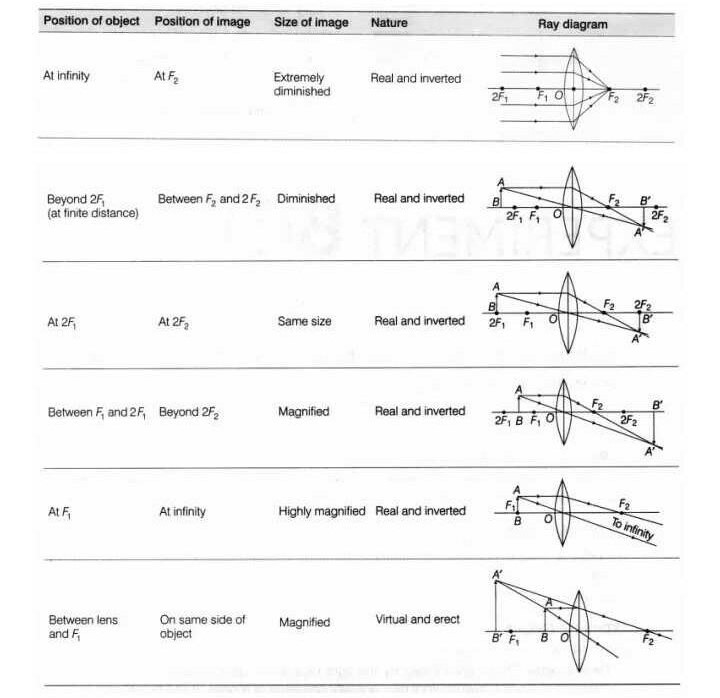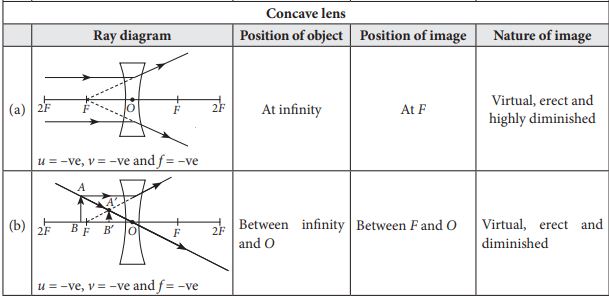Knowing the difference between convex and concave lens is one of the confusing topics for students in the field of optics. In this article, we will learn all the major and minor differences between the convex lens and concave lens.
Lenses are devices that transmit light and modify its path due to refraction. They are transparent and can be used to converge or diverge light.
Simple lenses consist of only one type of medium and are curved. Based on curvature, they are classified as a convex lens or a concave lens.
Related Topic: Biconvex Lens
Index
Difference Between Concave Lens and Convex Lens
Here, we have listed out the difference between concave lens and convex lens in a single table.
| Category | Concave lens | Convex lens |
| Appearance | They are thicker at the edges and thinner in the middle. | Convex lenses are thicker at the middle and thinner at the edges. |
| Interaction with Incident Light Rays | They make incident light rays diverge. | They make incident light rays converge. |
| Focal Length | Focal length is positive | Focal length is negative |
| Usage | Concave lenses are used in glasses with people with short sight (myopia). They are also used in spyglasses and some kinds of telescopes. | Convex lenses are used in microscopes and magnifying lenses. They are also used in projectors and cameras. They are used for glasses for people with long sight (hypermetropia). |
| Image Formation | – For a real object, the image is always virtual and erect. – It is formed between the lens and object. – Images formed are diminished. | For a real object, there are various image types based on position. Let focal distance be f. – If the object is between focus and pole of lens, image is magnified, erect and virtual. It is on same side as object. – If the object is at focus, image is real and is formed at infinity. – If the object is between f and 2f, image is real, inverted and magnified. It is located beyond 2f on the other side. – If the object is at 2f, image is real, inverted and same size. It is located at 2f on the other side. – If the object is beyond 2f, image is real, diminished and inverted. It is between f and 2f on the other side. – If the object is at infinity, image is real, highly diminished and formed at f. It is inverted. |
Image Formation Diagrams
Now, let’s look into various images formed by these two lenses on various conditions, which will further help us to find the difference between convex lens and concave lens.
Convex Lens

Concave Lens

FAQs
Convex lenses are used to correct farsightedness (hypermetropia).
Concave lenses are used to correct nearsightedness (myopia).
The different types of convex lens are:
1. Plano-convex lens: It has one plane side and one convex side.
2. Biconvex (or just convex) lens: It is convex on both sides.
3. Concavo-convex lens: It is concave on one side and convex on other side.
The different types of convex lens are:
1. Plano-concave lens: It has one plane side and one concave side.
2. Biconcave (or just concave) lens: It is concave on both sides.
3. Convexo-concave lens: It is convex on one side and concave on other side.
We can tell apart a convex and concave lens without touching its surface as follows.
We pass a stream of light from a distant source (like the Sun) onto the lens. Then we put a paper in front of the lens and adjust its position.
– If a small point image is formed, the lens is convex.
– If no image is formed despite adjusting position, the lens is concave.
